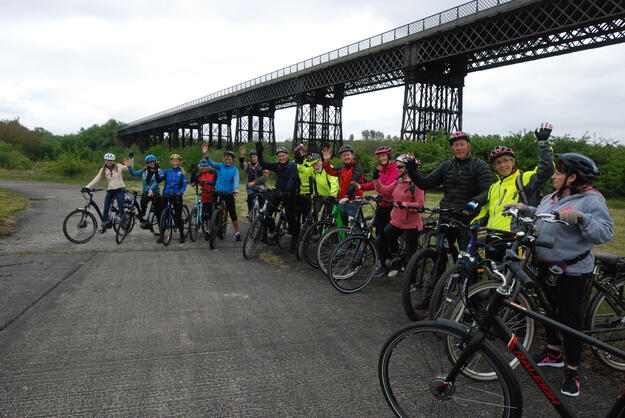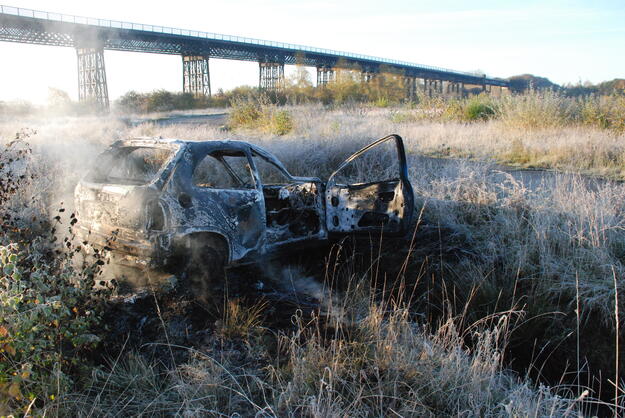Bennerley Viaduct
Bennerley Viaduct was built in 1877 to carry a new railroad line across the Erewash River. Spanning the valley was a necessity for the new line, but the structure needed to be lightweight in order to prevent underground mining tunnels from collapsing from the weight. This engineering challenge was met through the use of wrought iron, a construction material then already being superseded by steel, and no longer produced on a commercial scale. Today, only one other wrought-iron viaduct survives in England.
The last freight train crossed Bennerley viaduct in 1968, and the structure was then taken out of use. While proposals for its demolition were met with local resistance, the structure stood for many decades without a function. Today a newly-established community group has embraced a vision to reclaim the hulking structure and open it to community use. The plan is part of a nation-wide drive to transform disused railway routes into trails for walking and cycling, promoting health and well-being, helping strengthen social ties, and making it easier for people to experience nature and the outdoors. Once opened, the trail would serve to link walking trails that follow the Erewash and Nottingham Canals—earlier means of transporting goods—which pass close by the two ends of the viaduct. The process is enabling volunteers to become actively involved in a regeneration project and capitalize on the industrial heritage of their community. Through the 2020 World Monuments Watch, World Monuments Fund is supporting their plans to establish an effective governance structure to ensure the long-term future of this initiative.
World Monuments Fund gratefully acknowledges The Robert W. Wilson Charitable Trust, American Express, Railway Paths Ltd, Historic England, the National Lottery Heritage Fund, and the Railway Heritage Trust for their support of Bennerley Viaduct.



